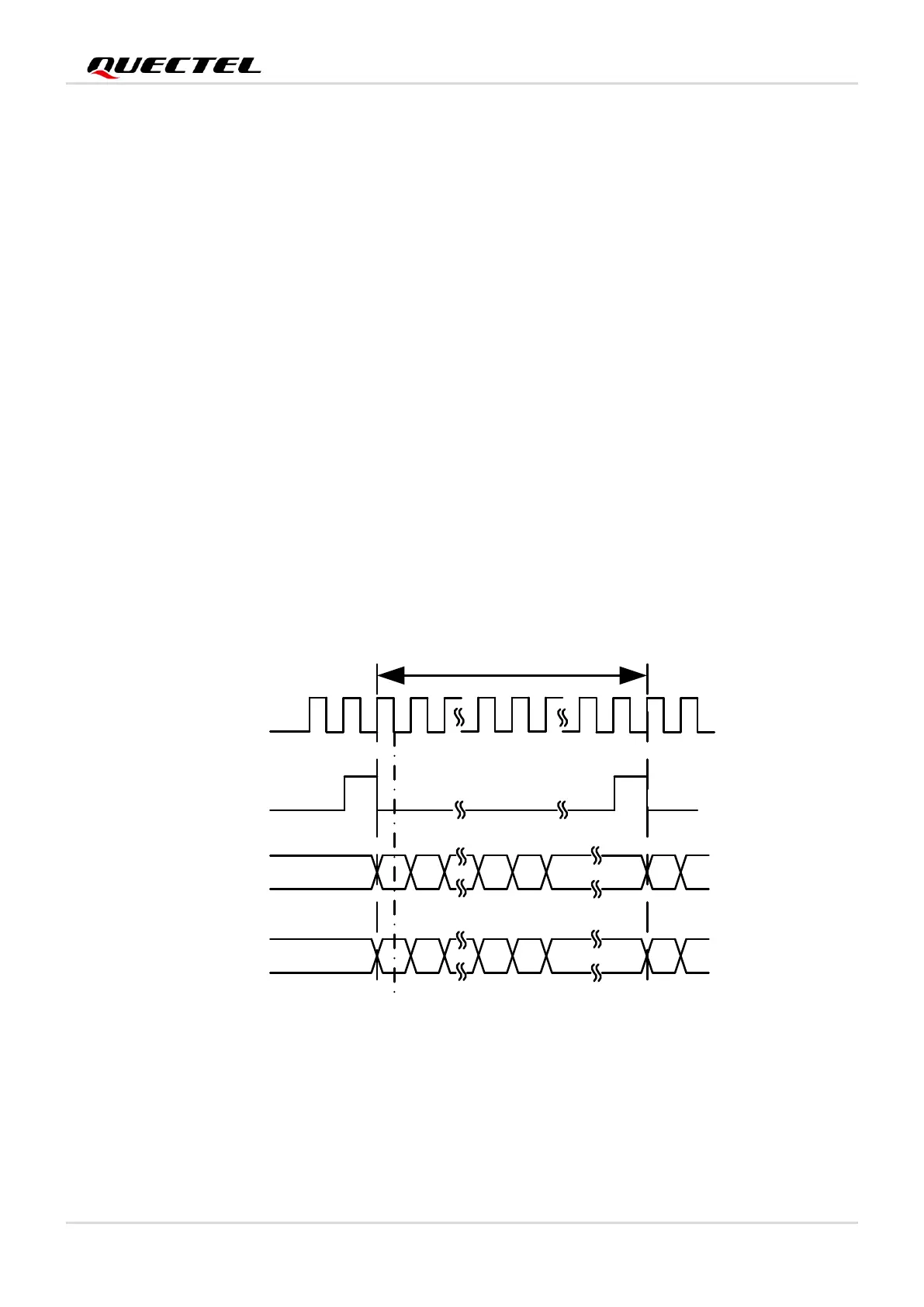LTE Standard Module Series
EM05-G Hardware Design
EM05-G_Hardware_Design 41 / 69
4.3. PCM Interface*
The module supports audio communication via Pulse Code Modulation (PCM) digital interface. The PCM
interface supports the following modes:
⚫ Primary mode (short frame synchronization): the module works as both master and slave.
⚫ Auxiliary mode (long frame synchronization): the module works as master only.
In primary mode, the data is sampled on the falling edge of the PCM_CLK and transmitted on the rising
edge. The PCM_SYNC falling edge represents the MSB. In this mode, the PCM interface supports
256 kHz, 512 kHz, 1024 kHz or 2048 kHz PCM_CLK at 8 kHz PCM_SYNC, and also supports 4096 kHz
PCM_CLK at 16 kHz PCM_SYNC.
In auxiliary mode, the data is sampled on the falling edge of the PCM_CLK and transmitted on the rising
edge. The PCM_SYNC rising edge represents the MSB. In this mode, PCM interface operates with a
256 kHz PCM_CLK and an 8 kHz, 50 % duty cycle PCM_SYNC only.
The module supports 16-bit linear data format. The following figures show the primary mode’s timing
relationship with 8 kHz PCM_SYNC and 2048 kHz PCM_CLK, as well as the auxiliary mode’s timing
relationship with 8 kHz PCM_SYNC and 256 kHz PCM_CLK.

